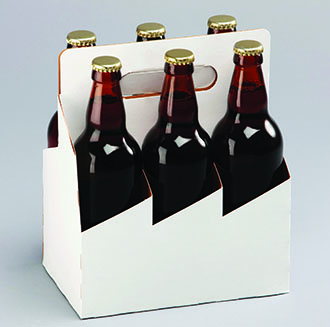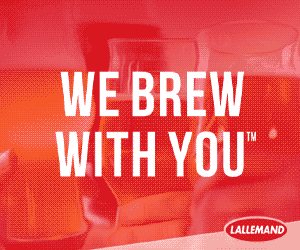Cleaning Bottles
Q: I would like some information on methods for cleaning and sanitizing bottles. Also what is the best way to store the bottles after they are cleaned/sterilized? We like to reuse our bottles but want to make sure they are properly sterilized before each use.
— Sue Gauthier • San Antonio, Texas
A: Let’s start with brand new bottles that your local microbrewery buys. These bottles arrive from the supplier clean and packed in various ways. Whatever the delivery package, the clean glass is brought into the package line where the bottles are rinsed with clean water. Rinsing removes dust, wets the surface, and readies the bottle for filling. The key thing with rinsing a bottle before filling is that wet bottles are a lot easier to fill than dry bottles because the wet surface is much less likely to cause foaming. This is something that is also applied when filling beer glasses.
Some, but not all, breweries add a sanitizing compound to the rinse water. Common sanitizers include ozone, chlorine dioxide, sodium hypochlorite (bleach), iodophor, and peroxyacetic acid. These sanitizers are often added more to keep the water clean than to sanitize the surface of the bottle, but some breweries do indeed rely on liquid sanitizers to sanitize the bottle surface. All of these compounds can cause flavor problems in the beer if much remains on the bottle surface and modern bottle rinsers are designed to minimize the volume of rinse water left on the bottle surface. Dilute bleach water works great at home as long as the sanitizer is allowed to completely drain and dry from the bottle before filling.
The reason I wanted to cover how commercial breweries handle glass is to illustrate two key points. The first is that starting with clean, new glass is the norm and the second is that there is not much that is done to sanitize the glass other than rinsing the bottle with a relatively dilute, no-rinse sanitizer.

What about breweries who use returnable glass? This practice is actually on the decline in a major way in many beer-drinking countries, and is pretty much not seen in the US. But for the breweries in other countries that use returnable glass, the process begins with used bottles in all imaginable forms of dirtiness arriving at the brewery. These containers need to be freed of their labels, cleaned and sanitized before use. Strong, hot, alkaline (caustic) solutions are the primary cleaner and this intensive process effectively cleans and sanitizes the bottles. The cleaning also slowly etches the glass surface, making returnable bottles easy to spot due to their less-than-new appearance. The rest of the packaging process is pretty much the same, except that special care is taken to screen empty and full bottles for chips, cigarette butts, and other stuff that may be left in a bottle after cleaning, imperfections, and cracks using in-line scanning equipment.
Homebrewers have the same options as commercial breweries; new and used glass. My recommendation is to buy new bottles from a local homebrew supply retailer, care for them like you would drinking glasses and enjoy a long service life. This means rinsing your new glass with a dilute sanitizer for the first use, allowing the sanitizer to drain, and filling. Bottle trees, whether purchased or homemade, are very handy when it comes to draining your rinsed bottles. Unless you are packaging carbonated beer using a counter-pressure filler there is nothing wrong with performing the sanitizer rinse and drain step before packaging, and then storing the bottles until bottle day. The easiest way to store clean glass is in a clean case box with a plastic film covering the bottle tops, or storing the glass upside down in a clean box lined with a clean sheet of foil or butcher paper.
When it comes to collecting your bottles for use in the future, I strongly recommend being particular about things. Soon after emptying a bottle you should thoroughly rinse the glass, making sure to remove any yeast sediment, and set it aside for further cleaning in the future. When you have accumulated enough bottles to hold a batch you can clean the bottles for re-use.
It is really tempting to use a dishwasher to clean bottles, but you should resist the temptation. I mentioned earlier that commercial bottle washers cause glass etching. The same thing happens at home. Dishwasher detergents are formulated for use with soiled dishes and are very aggressive on pre-cleaned dishes. I am a pre-cleaner because I cannot stand to look at a dishwasher full of nasty dishes. I learned a long time ago that putting my beer and wine glasses in the dishwasher is a bad thing because they are etched and develop a weird aroma when repeatedly washed in a dishwasher. I baby my glasses and any bottle that I plan on re-using. Dishwashers can be run without detergents where the dry cycle is used to heat sanitize your glass.
Beer bottles do not contain any heavy soils, as long as they are carefully rinsed after use, and mild dishwashing soaps or bar-type cleaners work very well. One of the old-fashioned glass cleaners used in bars is sodium carbonate. This is a mild alkaline cleaner that does a great job on glassware. A bottle brush can be used or you can simply soak your bottles in a hot cleaner for several minutes (time depends on cleaner, temperature, and soil load) before rinsing. Once the clean bottles have dried you can rinse again with your sanitizer solution.
Some brewers hike their concerns about sanitizing glass up a notch when brewing lower alcohol beers since they are more prone to microbiological spoilage. I honestly do not get too worked up about glass sanitizing as long as good cleaning procedures have been used on bottles that have been previously filled and emptied. I hope this information is sufficient to answer your question and that you confidently move along with your bottle washing plans. My answer to your question is complete, but I am not done writing!
When I was a first-year graduate student in Dr. Michael Lewis’ brewing lab at UC-Davis I was given the basic lab rules from a senior student in the lab. This was in 1991 and we had ready access to returnable longneck bottles. We obtained most of the glass for lab beers by buying cases of empties from the local Budweiser distributor and bringing them into the fold. We used caustic to soak the labels free from the bottles, put the bottles in a laboratory dishwasher with a heavy duty glass cleaner (that eventually pitted the surface of the bottles) and sterilized the bottles in a steamer. After doing this for some time using the same bottles over and over we began having bottle explosions during bottling. I don’t like exploding glass, even when wearing a full-face shield, and decided that steaming clean beer bottles was a wee bit excessive. We discontinued the practice, stopped seeing bottle bombs, and never had any issues with contamination associated with our glass.
My point to this whole story is that there is a downside to overkilling your process. The biggest battle with removing microbiological contaminants from a food contact like glass or stainless steel is cleaning it. Sanitizing is pretty easy after you have successfully cleaned the surface, and ambient, dilute sanitizers work quite well on clean glass bottles. Gotta quote Charlie Papazian on this one … “Relax, don’t worry, and have a homebrew.”



